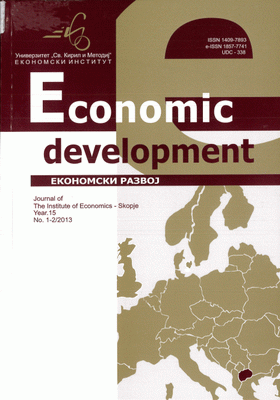Liquidity of tourism sector enterprises in Republic of Macedonia
Liquidity of tourism sector enterprises in Republic of Macedonia
Author(s): Marija Ackovska , Nako Taskov, Neda Petroska-AngelovskaSubject(s): Economy
Published by: Економски институт - Скопје
Keywords: Cash flow; liquidity; enterprises; tourism sector; Republic of Macedonia.
Summary/Abstract: This paper is focused on number of issues related to cash flow management and liquidity as a long-term problem of Macedonian tourism enterprises, having in mind that strong sales and profits do not ensure good cash flow and liquidity. The timing differences between accrual based profitability and cash flow means that even enterprise with growing sales and strong net income may run out of cash with ensuing disastrous results. This means that the enterprise needs to understand, project and manage its cash flow and liquidity very carefully. In that purpose some activities on enterprises and institutional level are needed. Defined policy should contain activities for: faster cash making then expiring liabilities; realization of cash inflows vis a vis cash outflows with limited risk; dynamic liability covering and activities for education and training of labor force. Some possibilities for institutional capacity strengthening concerning realization of good cash and liquidity management are related to following activities: activities related to continuous adjustment of Macedonian legal framework; activities related to monetary and credit policy in direction to improvement of borrowing conditions; activities related to improvement of business environment.Cash flow and liquidity projecting is an indispensable part of enterprise’s managing process. Without adequate projecting, the Macedonian tourism enterprises can never sufficiently know what its cash flow and liquidity position will be at any particular time. With it, surprises will be mitigated and the enterprise will be able to plan how to handle any shortfalls or excesses. In that order the timing of the cash inflows and cash outflows has to be taken in to account.
Journal: Економски Развој - Economic Development
- Issue Year: 15/2013
- Issue No: 1-2
- Page Range: 71-81
- Page Count: 11
- Language: English

